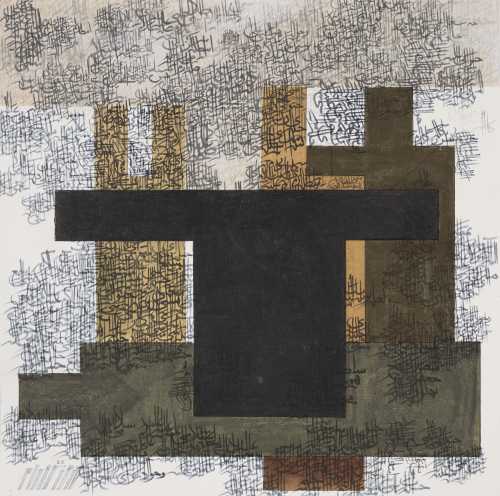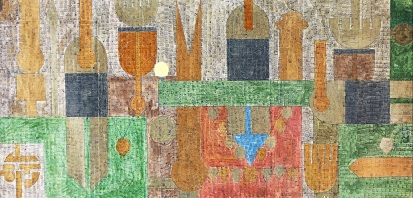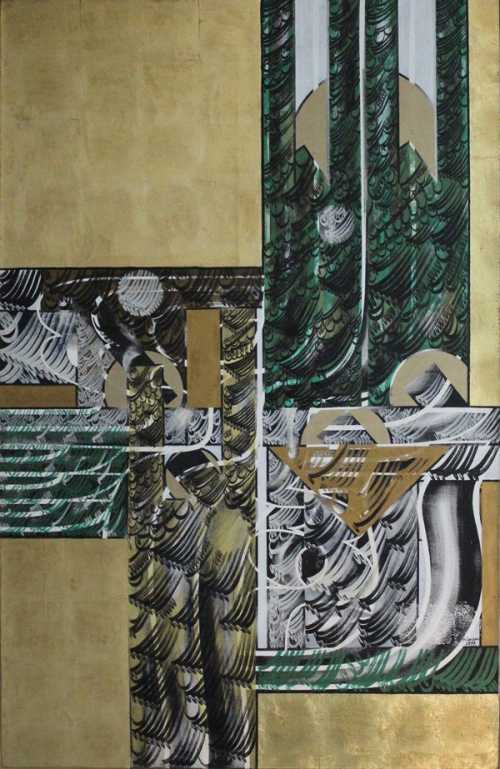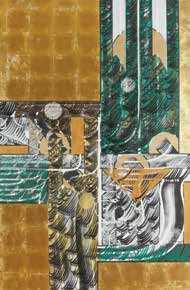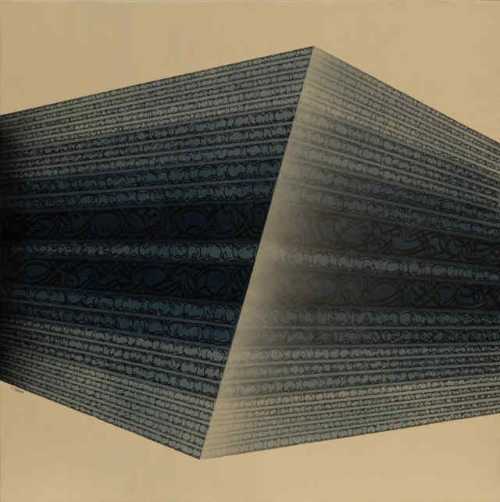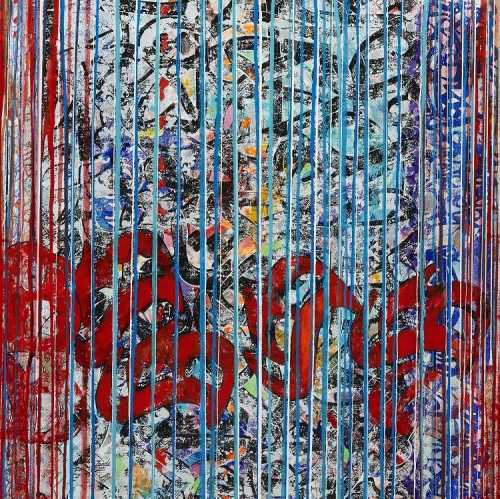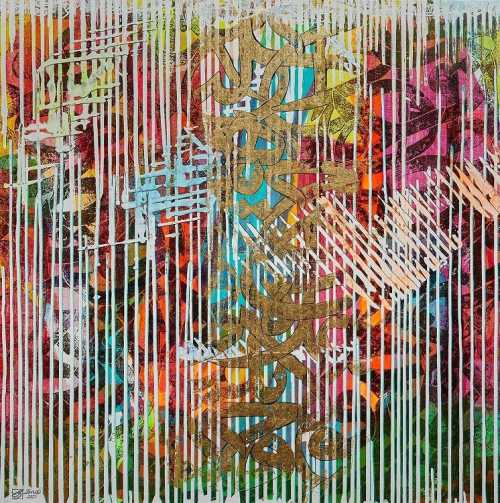- Exploring the Qur'an 1965
- Oil on canvas
- Painting, Calligraphy Painting
- 95.2 * 95.2 cm
- signed in Farsi (lower left); signed and inscribed 'Faramarz Pilaram Number 2' (on the reverse)
20 October 2021
Estimation
£30,000
41,448 USD
-
£40,000
55,264 USD
Unsold
Artwork Description
The present artwork is a beautiful example from the Iranian modernist painter Faramarz Pilaram, coming from his second period of Saqqakhaneh, where the artist began to use geometric experimentation within calligraphic forms. Acquired from the then Director of the Iran-America Society in Tehran, the owner came across this painting when Pilaram was having an exhibition at the Society the same year the artist was receiving his masters from the Faculty of Decorative Arts in Tehran and just before he was granted a scholarship to study lithography and print in France in 1971.
As the owner states, ‘Farmarz and I had met at several cultural gatherings in Tehran and he had been my ‘instructor’ into the world of Persian Miniatures and calligraphy by adapting it into the world of modern Western style art. I was interested in purchasing a work by the artist and the minute I walked into the exhibition hall that evening [in 1968] and saw this painting, I knew I needed to have it. It appeared to me to be the perfect example of what he had been trying to illustrated at that period of his work. I have had this treasure in my collection since that evening at the Iran-America Society.’
The artistic renaissance between the 1950s until early 1970s of the Saqqakhaneh School contributed to the international recognition of these artists. Artists participated in fairs and biennales that attracted local patrons and collectors abroad. The Saqqakhaneh movement, comprising Parviz Tanavoli and Massoud Arabshahi, alongside Faramarz Pilaram and others, was named after the fountains found in the older neighbourhoods of Iranian cities. Its members sought a pictorial language that would translate a common ground between their culture and heritage with that of the Western world.
Having a Modernist approach to classical Iranian imagery within this celebrated movement, Pilaram incorporated bold and metallic colours mixed with tribal arts and devout iconography. He achieved a traditional yet original painterly language, integration of calligraphy as a basis to transform classical and intricate Iranian calligraphy into nonsensical, whimsical writings. He abstracted Persian Calligraphy combining it with different forms to create ‘…a unity in [his] mind that creates the reality of [his] painting…’ (Pilaram, Exh.cat., Iran-America Society, 1975). Focusing on rhythmic and recurring reiteration and the phonetic characteristics, he approached his work with the idea of abstracting traditions.
The present lot executed in the 1960s is a prime example of how the artist materialised different phases within exploration of the figurative, decorative and calligraphic into a single piece. Bold blocks of shapes interwoven with delicate repetitive calligraphic strokes create fresh, original movements that distorted the boundaries of traditional formalism and blurs the lines between calligraphy and composition.
Pilaram’s work has been exhibited both within his native Iran and internationally including The Asia Society, New York; Grey Art Gallery, New York, the Barbican Centre, London, among others.
The artist was the recipient of several national and International awards including the 1962 Gold Medal at the 3rd Tehran Biennial, the Silver Medal at Venice Biennial in 1962, the First Prize from the Ministry of Art and Culture at the 4th Tehran Biennial 1964, and the First Prize for the World Liberation of Hunger initiative, awarded by UNESCO in 1968.
Pilaram’s works are included in the collections of Tehran Museum of Contemporary Art, Tehran; The Tehran Fine Arts Museum, Tehran; Grey Art Collection, New York; and The Museum of Modern Art, New York.
Realized Price
55,244 USD
Min Estimate
35,420 USD
Max Estimate
48,182 USD
Average Artwork Worth
+56.94%
Average Growth of Artwork Worth
Sales Performance Against Estimates
Average & Median Sold Lot Value
2021 - 2025
Performance vs. Estimate
2021 - 2025
Sell-through Rate
2021 - 2025
